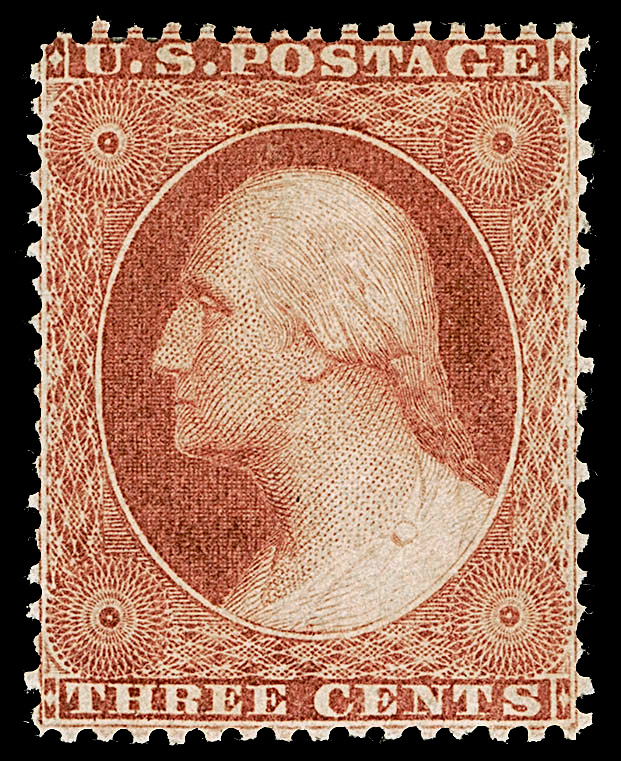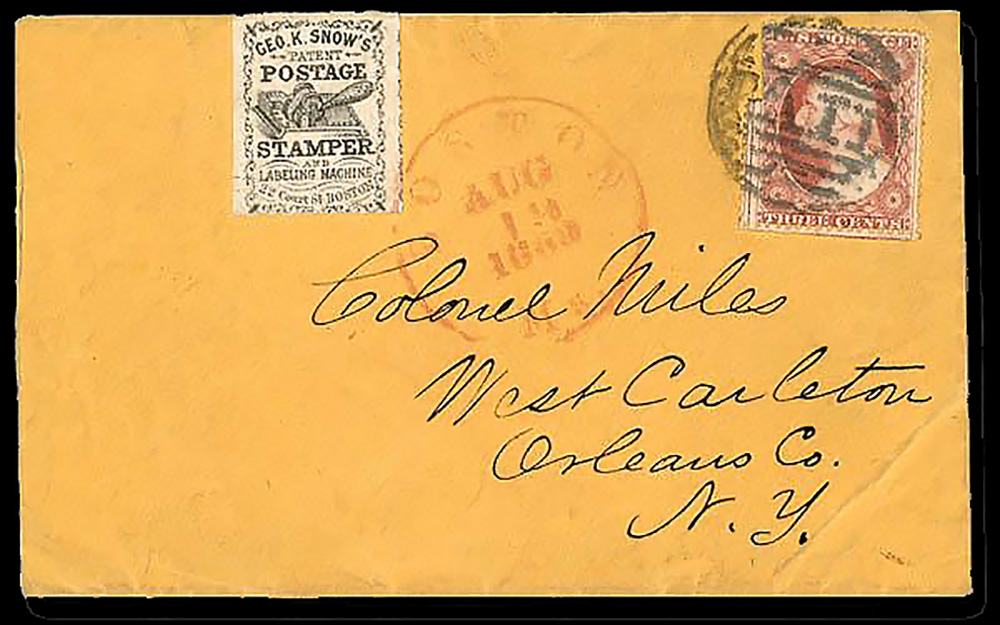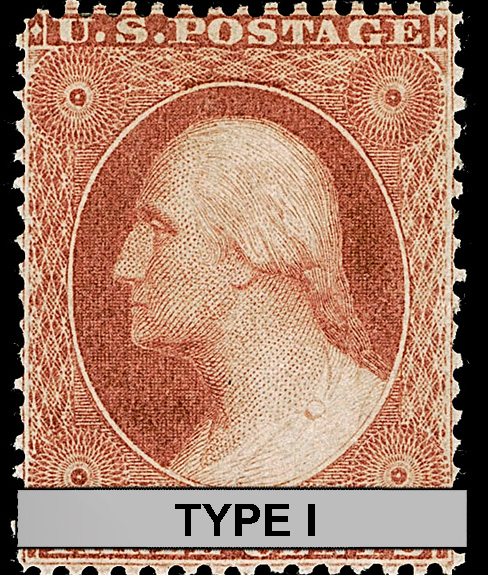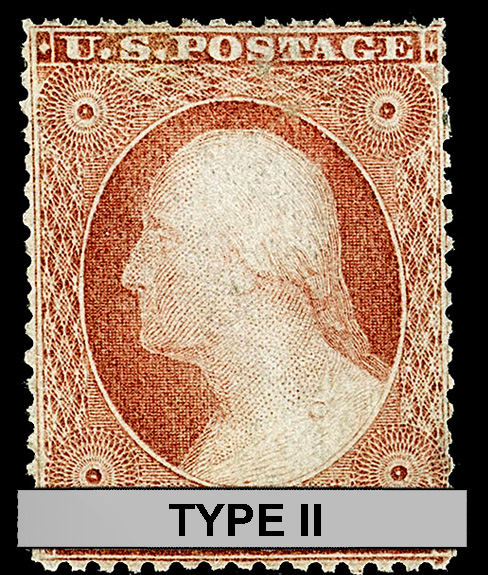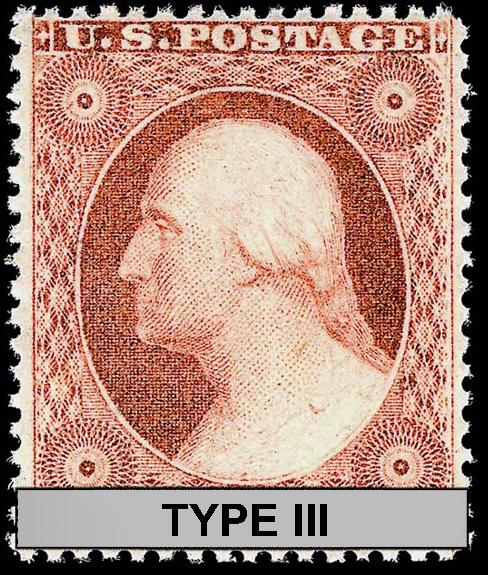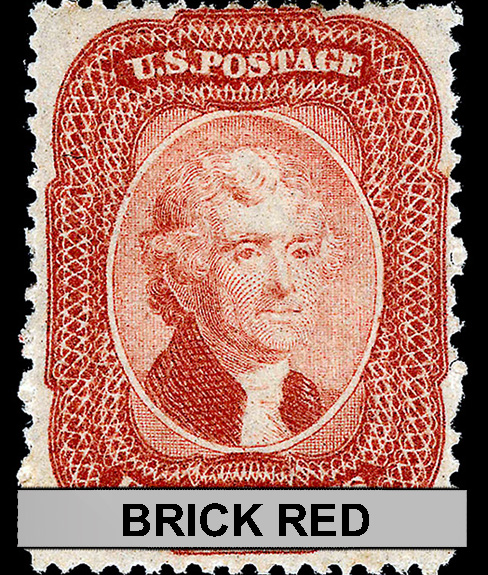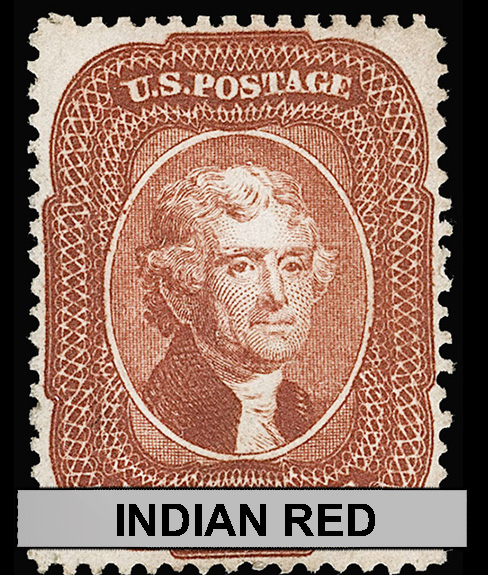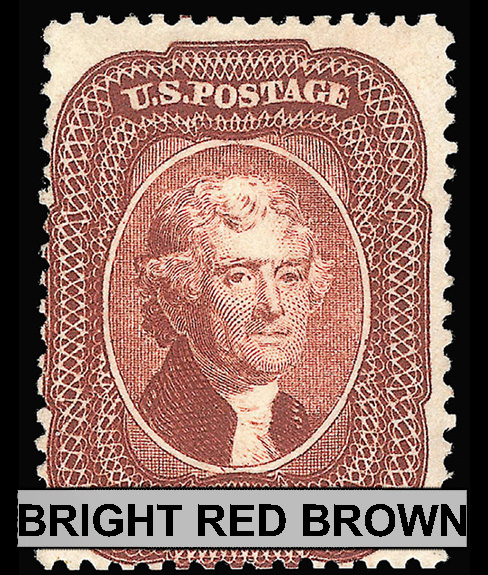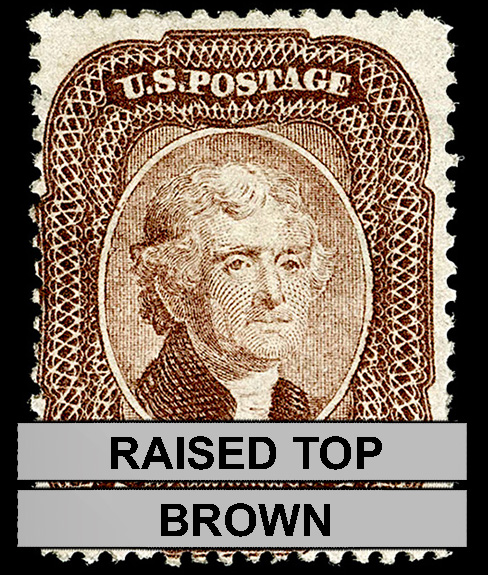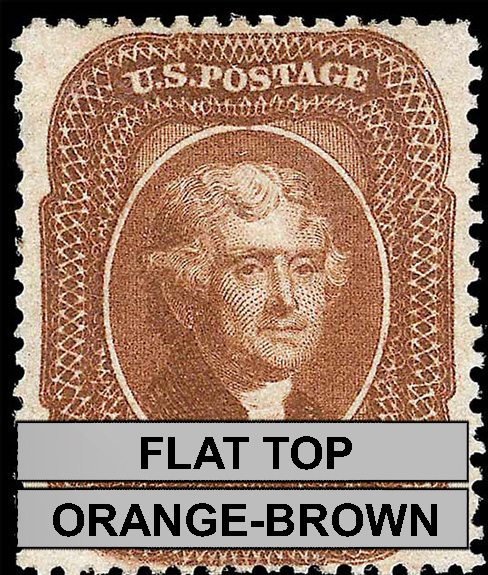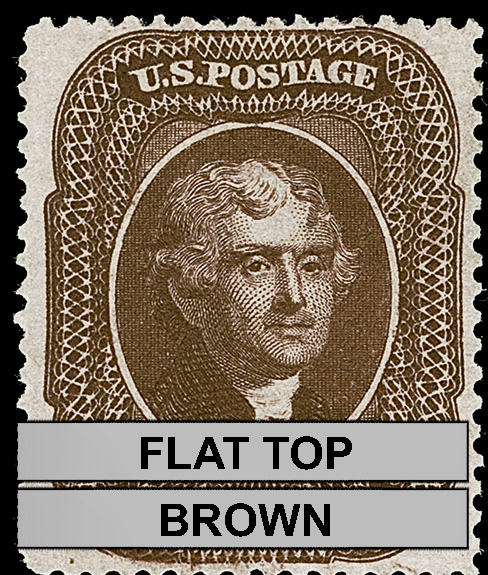Basic Info
3¢
Dull rose claret, brownish-claret, plum, and brownish-carmine
TYPE I
Printing Method: Die-to-relief-to-plate transfer process
Plate: plates 2 thru 8
Printer: Toppan, Carpenter & Co.
Subject: George Washington
Number issued: 38,271,500
Perforations: Perforated 15
Watermark: Unwatermarked
Scott #: 25
Issued: February 28th, 1857
Value
Used
$40 - $120 (four margins)
$7.50 - $12 (three margins)
No postmark with gum (MH)
$200 - $300 (four margins)
Full perfect gum, no postmark
no trace of stamp hinge mark (MNH)
$2,500 - $5,000
ID #25A
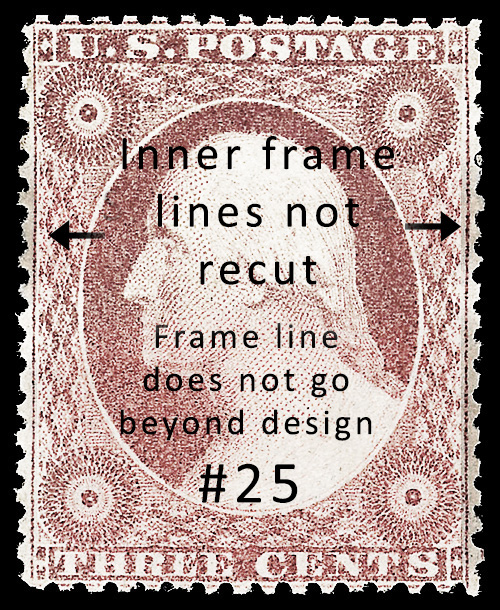
Inspiration for the Design
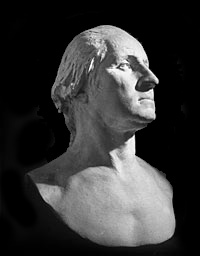
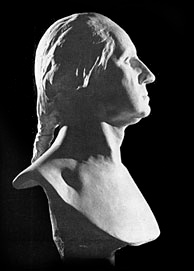
George Washington
Jean-Antoine Houdon (1741-1828)
Marble, 25" high
Located at Mount Vernon, Virginia

A contemporary banknote printed by Toppan, Carpenter with the same vignette as #25
The Imprint
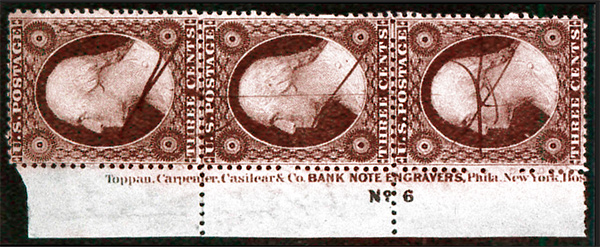
Along the side margin of the sheet can be found the Printers imprint along with the plate number
The Imperforate pair
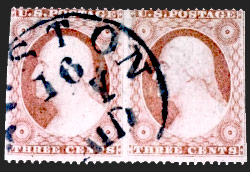
Extremely rare and not cataloged by Scotts. Last seen at an auction in 1973
Usage
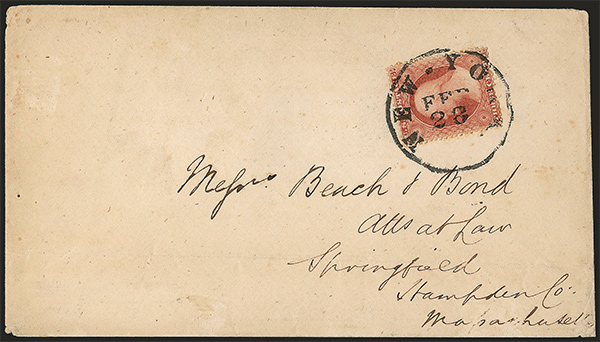
Earliest use of a perforated stamp, February 28th, 1857, the first day of issue
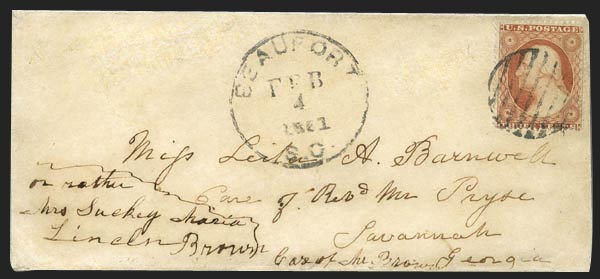
Cover mailed on the first day of the Civil War
From Beaufort, SC, to Savannah, GA
Feb 4th, 1861
The three cent stamp paid the ordinary letter rate, and two or more would be required on double, triple, etc., letters. The single postage to California was six cents which was the double letter rate. There was also the double rate to California supplied by four three cent stamps, etc. Double rate was defined as a distance exceeding 3,000 miles. A letter weighing less than ½ an ounce was single rate. Each additional ½ ounce was charged an additional single stamp (with the exception of CA, where it would an additional two stamps).
The foreign rate was supplied by the 10 and 20¢ rate, so strips or singles of the 3¢ can be found on these as well. At this time pre payment of envelopes was optional. Many chose to have the letter paid for by recipient at the foreign destination.
Multiples

Largest known used multiple
Forked Lightning Flaw
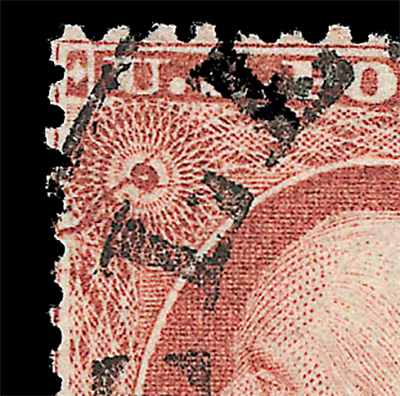
Known as the forked lightning crack on plate 7 (48R7) the crack is visible in the upper right rosette.
A full pane

A full pane of 100 there are two panes to a sheet of 200
Notable Sales

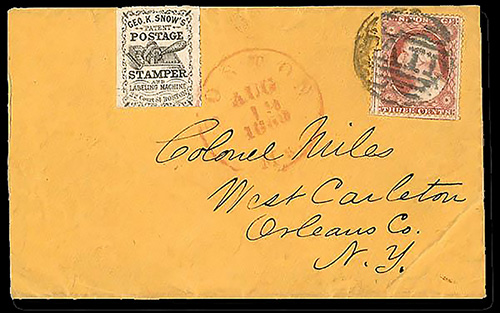
1860, the discovery example of an immortal coil: George K. Snow and his machine. A remarkable piece of philatelic history, being the world's earliest known coil forerunner.
Just a decade after the US' 1847 First Issue, mailers were grappling with an issue: how to affix stamps rapidly and efficiently to covers. The 1847 and 1851 Issues were imperforate, requiring each stamp to be cut from the sheet. The franking process was helped along with the 1857 Issue, which were now perforated, meaning a stamp could quickly and easily be removed from the sheet. But the work was still one stamp/one letter at a time.
Enter George K. Snow (1826/27-1885), a job printer of Watertown, Massachusetts (later of Boston). On May 18, 1858, he was granted US Patent # 20,306 for his "Postage Stamper and Labeling Machine". This device was designed to take a strip of stamps and affix them to covers, its speed limited only by the operator's urgency.
Snow's device thus represents the first concept of a coil stamp, the first privately produced coil, and the first postage-affixing machine - anywhere in the world.
Amazingly, Snow's work was unknown until the mid-1940s. Until that time, as recounted in The Stamp Machines and Coiled Stamps by George P. Howard (1943), the first US patent for "An Apparatus for Applying Stamps" was granted to Victoria I.H. Bundsen of London, England, on July 21, 1885. A similar machine had been submitted to the Patent Office by John L. Shaw of Grand Rapids, Michigan, on May 27, 1884, though patent was not issued until March 9, 1886. Both of these machines were a "hand-plunger" type, according to Howard, where a stack of individual stamps were piled face-up in a box on the plunger. With its descent, a moistener wetted the area of the envelope where the stamp would go. Upon reaching the bottom of its travel, the bottom-most stamp of the stack would be pressed against the moistened corner of the envelope and remain attached.
Between 1885 and 1906, when US Postmaster General George B. Cortelyou announced plans to test and choose the best method for both affixing and vending individual stamps, many stamp affixing machines were devised and patented. Some were of the early "stack-of-stamps" Bundsen/Shaw type, but soon some were developed to feed a strip of ten stamps (separated by the machine) one-at-a-time to a moistened envelope corner. Twenty such machines had been patented before 1906.
All these machines, however ingenious, worked with stacks or strips of stamps supplied flat—the first machine patented in the US using coiled stamps (not two-sided coils as we know them, but pasted-up strips of ten sheet stamps supplied on the machine in a roll) was granted to William R. Miller of Polo, Illinois, on January 29, 1889.
This history was overturned just a year after Howard's book was published.
In the January 29, 1944, issue of Stamps magazine appeared Allan M. Thatcher's article, "The First United States Coiled Stamp Affixing Machine Dummy Advertising Stamp" (parcel post. 151-152). There, he recounts some of Howard's work, then goes on to say:
1860, the discovery example of an immortal coil:
The stamp shows normal perforation separations at left and right (the individual columns of stamps having been separated by hand), with perforations separated by the machine's knife at top and bottom. Given the hand-set perforating of the time, the knife would not always fall through or along the perforations, giving us the top margin of the stamp below its design. Note also the slight curve to the knife's cut (particularly noticeable at bottom), due to the slight curl imparted to the stamp under pressure.
Essay's

